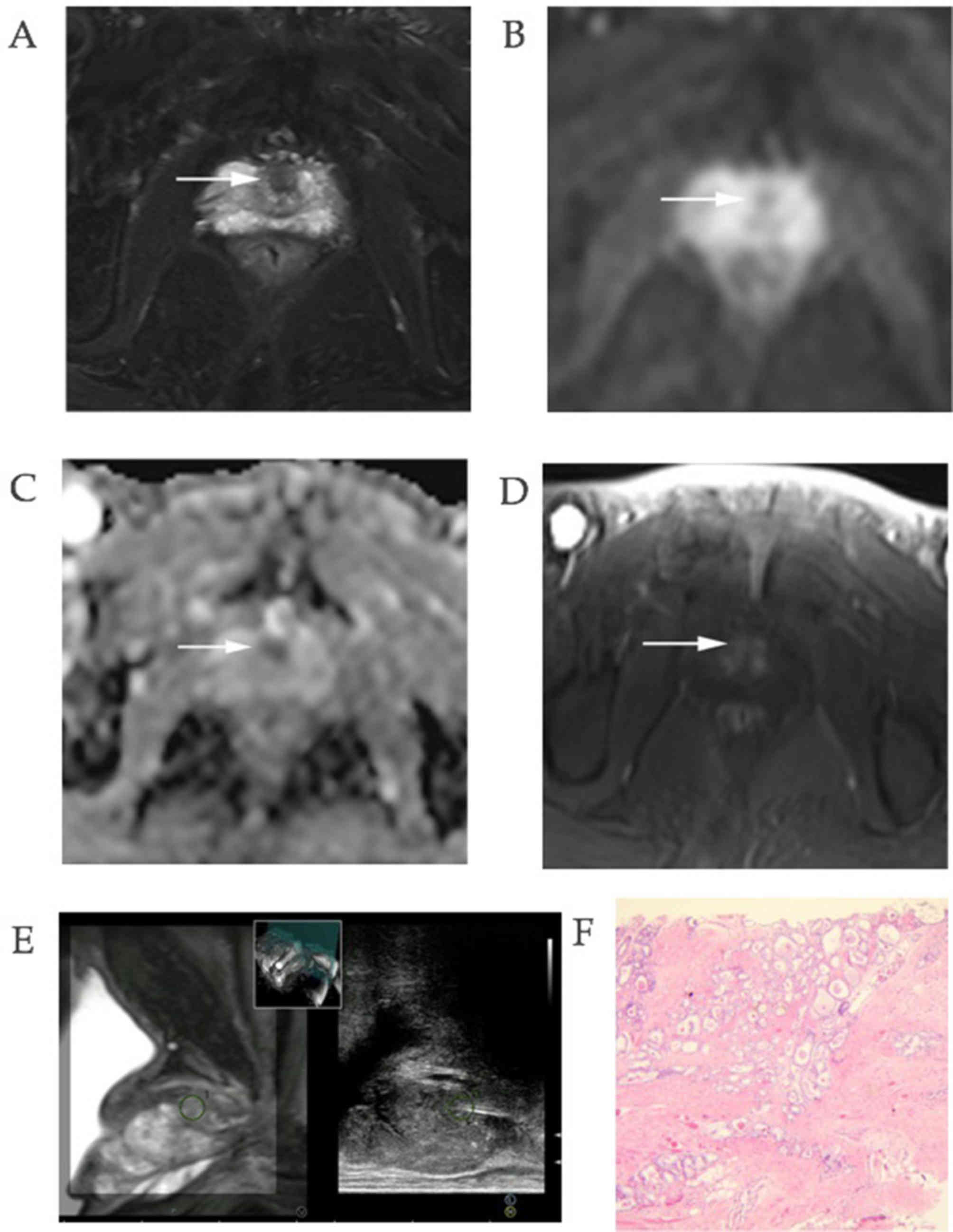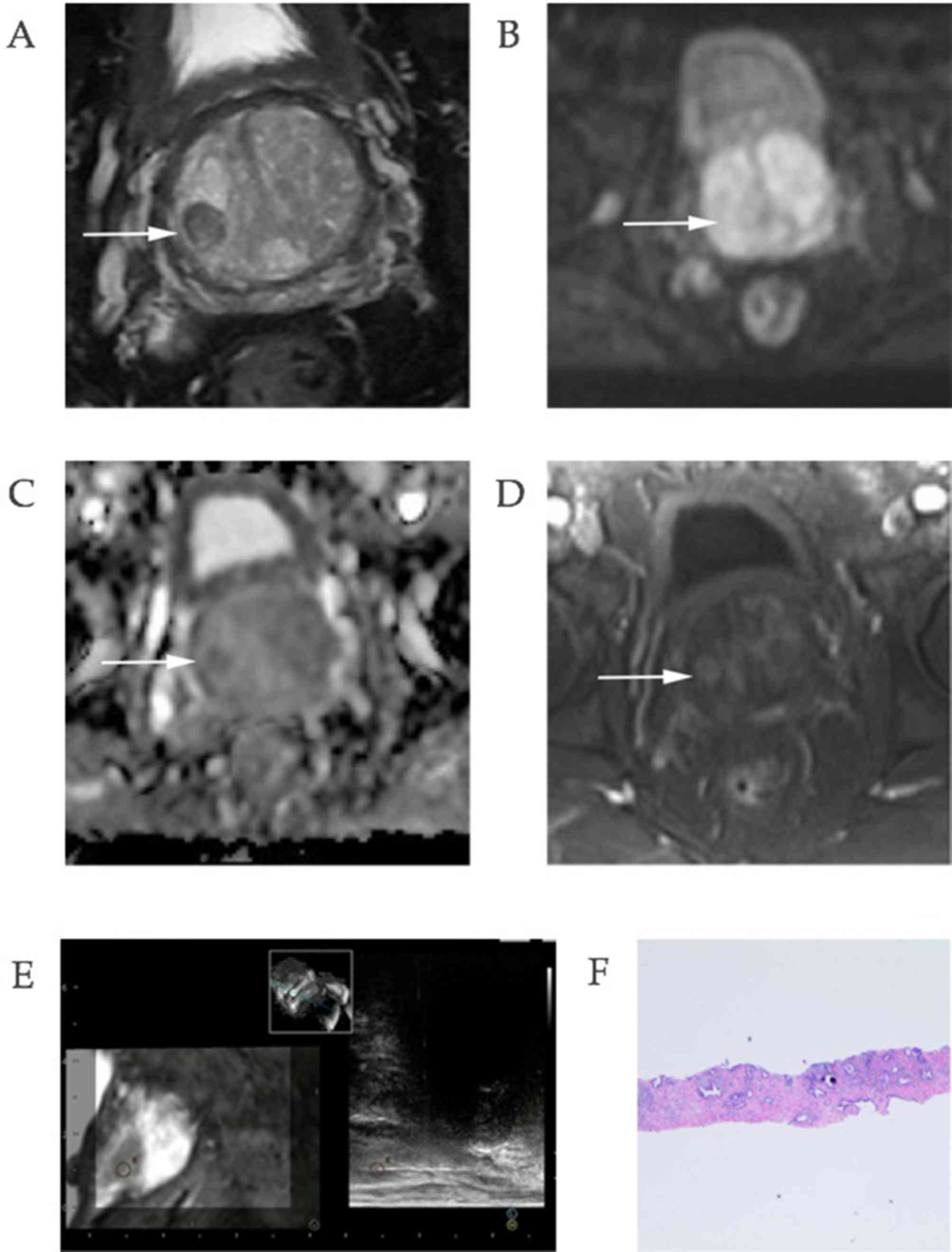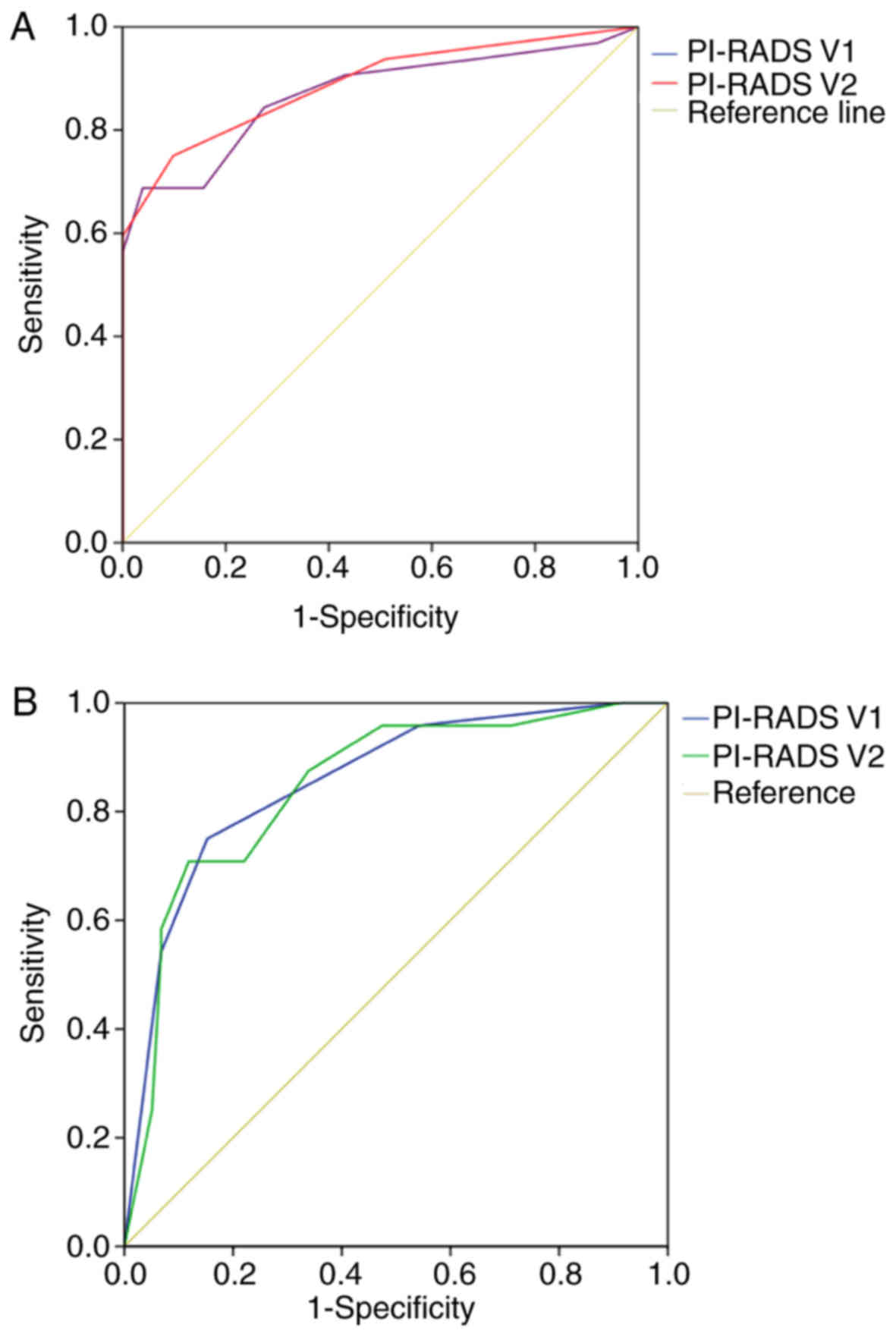|
1
|
Jung SI, Donati OF, Vargas HA, Goldman D,
Hricak H and Akin O: Transition zone prostate cancer: Incremental
value of diffusion-weighted endorectal MR imaging in tumor
detection and assessment of aggressiveness. Radiology. 269:493–503.
2013. View Article : Google Scholar : PubMed/NCBI
|
|
2
|
Pinto PA, Chung PH, Rastinehad AR, Baccala
AA Jr, Kruecker J, Benjamin CJ, Xu S, Yan P, Kadoury S, Chua C, et
al: Magnetic resonance imaging/ultrasound fusion guided prostate
biopsy improves cancer detection following transrectal ultrasound
biopsy and correlates with multiparametric magnetic resonance
imaging. J Urol. 186:1281–1285. 2011. View Article : Google Scholar : PubMed/NCBI
|
|
3
|
Taira AV, Merrick GS, Galbreath RW,
Andreini H, Taubenslag W, Curtis R, Butler WM, Adamovich E and
Wallner KE: Performance of transperineal template-guided mapping
biopsy in detecting prostate cancer in the initial and repeat
biopsy setting. Prostate Cancer Prostatic Dis. 13:71–77. 2010.
View Article : Google Scholar : PubMed/NCBI
|
|
4
|
Barentsz JO, Richenberg J, Clements R,
Choyke P, Verma S, Villeirs G, Rouviere O, Logager V and Fütterer
JJ: European Society of Urogenital Radiology: ESUR prostate MR
guidelines 2012. Eur Radiol. 22:746–757. 2012. View Article : Google Scholar : PubMed/NCBI
|
|
5
|
Hassanzadeh E, Glazer DI, Dunne RM,
Fennessy FM, Harisinghani MG and Tempany CM: Prostate imaging
reporting and data system version 2 (PI-RADS v2): A pictorial
review. Abdom Radiol (NY). 42:278–289. 2017. View Article : Google Scholar : PubMed/NCBI
|
|
6
|
Roethke MC, Kuru TH, Schultze S, Tichy D,
Kopp-Schneider A, Fenchel M, Schlemmer HP and Hadaschik BA:
Evaluation of the ESUR PI-RADS scoring system for multiparametric
MRI of the prostate with targeted MR/TRUS fusion-guided biopsy at
3.0 Tesla. Eur Radiol. 24:344–352. 2014. View Article : Google Scholar : PubMed/NCBI
|
|
7
|
Kasel-Seibert M, Lehmann T, Aschenbach R,
Guettler FV, Abubrig M, Grimm MO, Teichgraeber U and Franiel T:
Assessment of PI-RADS v2 for the detection of prostate cancer. Eur
J Radiol. 85:726–731. 2016. View Article : Google Scholar : PubMed/NCBI
|
|
8
|
Weinreb JC, Barentsz JO, Choyke PL, Cornud
F, Haider MA, Macura KJ, Margolis D, Schnall MD, Shtern F, Tempany
CM, et al: PI-RADS prostate imaging-reporting and data system:
2015, version 2. Eur Urol. 69:16–40. 2016. View Article : Google Scholar : PubMed/NCBI
|
|
9
|
Bouyé S, Potiron E, Puech P, Leroy X,
Lemaitre L and Villers A: Transition zone and anterior stromal
prostate cancers: Zone of origin and intraprostatic patterns of
spread at histopathology. Prostate. 69:105–113. 2009. View Article : Google Scholar : PubMed/NCBI
|
|
10
|
Röthke M, Blondin D, Schlemmer HP and
Franiel T: PI-RADS classification: Structured reporting for MRI of
the prostate. Rofo. 185:253–261. 2013.(In German). PubMed/NCBI
|
|
11
|
Polanec S, Helbich TH, Bickel H,
Pinker-Domenig K, Georg D, Shariat SF, Aulitzky W, Susani M and
Baltzer PA: Head-to-head comparison of PI-RADS v2 and PI-RADS v1.
Eur J Radiol. 85:1125–1131. 2016. View Article : Google Scholar : PubMed/NCBI
|
|
12
|
Park SY, Jung DC, Oh YT, Cho NH, Choi YD,
Rha KH, Hong SJ and Han K: Prostate cancer: PI-RADS version 2 helps
preoperatively predict clinically significant cancers. Radiology.
280:108–116. 2016. View Article : Google Scholar : PubMed/NCBI
|
|
13
|
Lawrence EM, Tang SY, Barrett T, Koo B,
Goldman DA, Warren AY, Axell RG, Doble A, Gallagher FA,
Gnanapragasam VJ, et al: Prostate cancer: Performance
characteristics of combined T2W and DW-MRI scoring in
the setting of template transperineal re-biopsy using MR-TRUS
fusion. Eur Radiol. 24:1497–1505. 2014. View Article : Google Scholar : PubMed/NCBI
|
|
14
|
Rastinehad AR, Waingankar N, Turkbey B,
Yaskiv O, Sonstegard AM, Fakhoury M, Olsson CA, Siegel DN, Choyke
PL, Ben-Levi E and Villani R: Comparison of multiparametric MRI
scoring systems and the impact on cancer detection in patients
undergoing MR US fusion guided prostate biopsies. PLoS One.
10:e01434042015. View Article : Google Scholar : PubMed/NCBI
|
|
15
|
Roethke M, Anastasiadis AG, Lichy M,
Werner M, Wagner P, Kruck S, Claussen CD, Stenzl A, Schlemmer HP
and Schilling D: MRI-guided prostate biopsy detects clinically
significant cancer: Analysis of a cohort of 100 patients after
previous negative TRUS biopsy. World J Urol. 30:213–218. 2012.
View Article : Google Scholar : PubMed/NCBI
|
|
16
|
Xu S, Kruecker J, Turkbey B, Glossop N,
Singh AK, Choyke P, Pinto P and Wood BJ: Real-time MRI-TRUS fusion
for guidance of targeted prostate biopsies. Comput Aided Surg.
13:255–264. 2008. View Article : Google Scholar : PubMed/NCBI
|

















